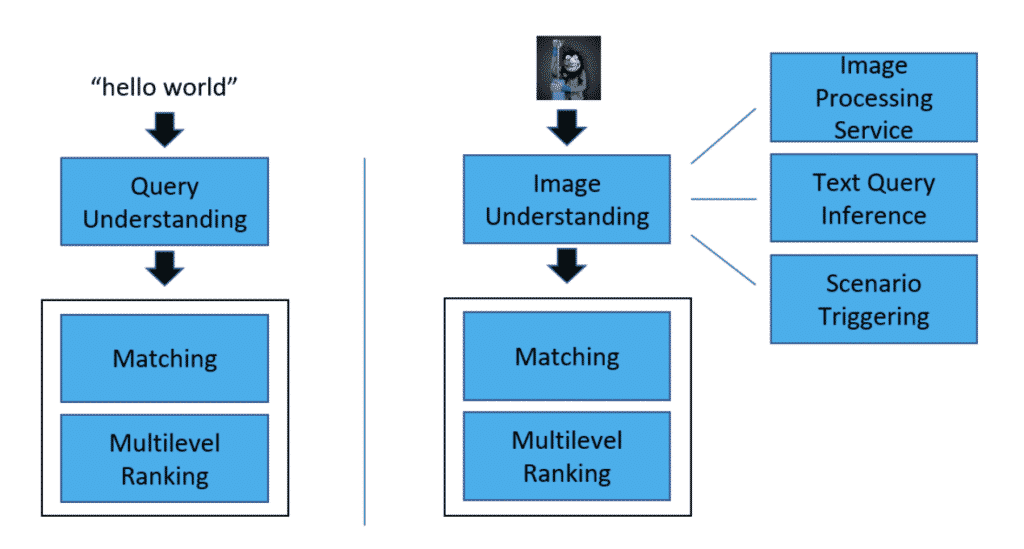Before we delve into visual search optimization techniques and strategies, let’s first understand exactly what it is and decide how important it is, relative to text search optimization.
What is Visual Search?
This form of searching for online content has in fact been around for several years. The feature has been made available on several search and social media platforms such as Google, Bing, Amazon, Pinterest (of course), and Snapchat. However, it hasn’t been until the sharp rise in e-Commerce that was brought about in 2020 and 2021 from the changing user shopping behaviour, that has really boosted visual search.
Visual search basically means the user uses an image to search as oppose to text or voice, and primarily browses through the image results instead.
When Do People Use Visual Search?
The most obvious would be when browsing and shopping for products online. In other words, the entire world of e-Commerce revolves around visual search. Let’s take a look at what other reasons there are for people to use visual search.
- e-Commerce: scrolling through product search results
- Visually-driven industries: fashion trends, arts and crafts, DIY ideas
- Research: creative ideas such as furniture for small space
- Can’t remember the name of what something is called and searching using the image to find out (a bit reversed from traditional search, but it happens quite frequently)
There are probably more reasons as to why anyone would use image search. Moreover, we’ve seen that video and image content has made the online world much more vibrant the last decade. The online experience is today quite different from the internet’s early days.
How Does it Impact Overall SEO Strategy?
Search in itself is already a lucrative digital marketing channel that brings good business. The growing popularity of visual search will further amplify this, opening new revenue streams for online businesses. As e-Commerce grows, so will visual search which compliments customers’ online shopping experience.
SEO practitioners should definitely not ignore visual search.
In a nutshell, this is how it works:

So as you can see, it’s not too different from text search. What it does mean is that you’re going to want to ensure your website is rich with high quality (but also size-optimized) images. If you’re an online store, you might want to make sure you’re uploading at least 3-4 images of each product taken from different angles that shows different qualities of the product. Image description will also be important.
How Does Visual Search Work?
And we come to the ultimate question: how can we best optimize for visual search? First and foremost, you’re going to have to optimize image content of your website both ‘quality’ and ‘quantity’. For quality, that means finding the fine-balance between high quality image and image size.
Images come with descriptive details which you can think of as the features of an image, such as color: red, material: cotton, size: big (relative), etc. These properties or features of an image is what gives that image meaning. When doing image search, the search engines will nevertheless go through their database of images and browse through these descriptions to identify the closest match to display.
So, conceptually, optimizing for visual search isn’t that different from text search. You can apply the same concepts, with the difference being, when it comes to anything visual, it’s a bit more abstract compared to text (which is basically text-to-text). And requires new technology sets such as image recognition and some learning algorithm to collect, store and learn the many facets and data-points of an image.
For example, here’s the identification of a single data point of an image. And we’re talking potentially in the hundreds for a single image:
Here’s another example that identifies and collect datapoint related to image quality, resolution and noise.
Quick SEO Checklist for Visual Search?
If you’re not sure where to start, here’s a list of preliminary SEO checklist for visual search.
- Make sure to prepare and submit image sitemap via Google search console.
- Add descriptive image alt-text to images you publish.
- Maximize usage of the image title tags and captions.
- Consider using schema mark-ups and structured data.
- Optimize the image size and file type as well.
- Check that the images renders alright on various devices.
- Check image-to-text relevancy of the text surrounding the image.
Follow and connect with us to learn more about SEO, algorithms and search logic. And visual search in-full.